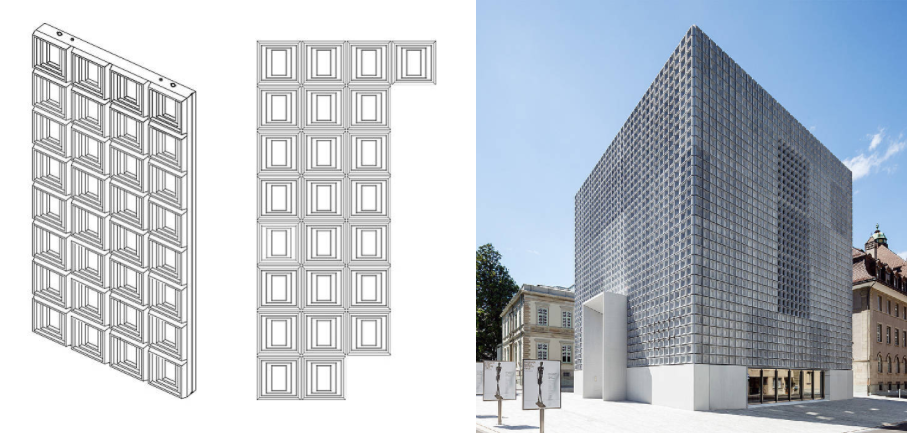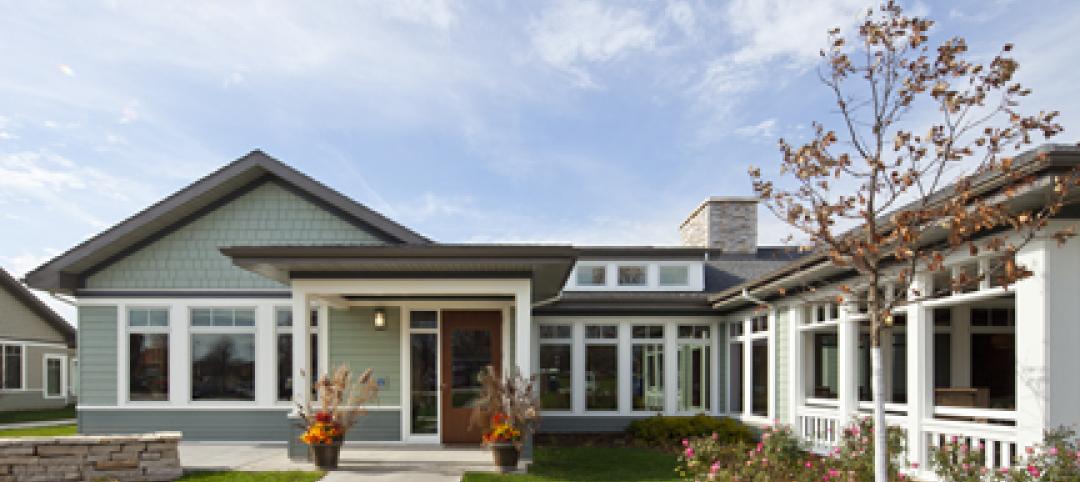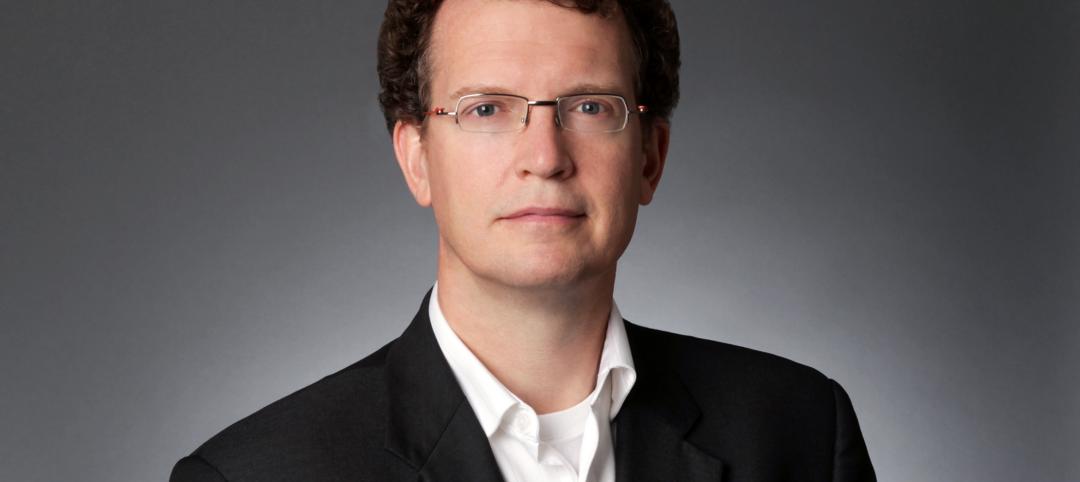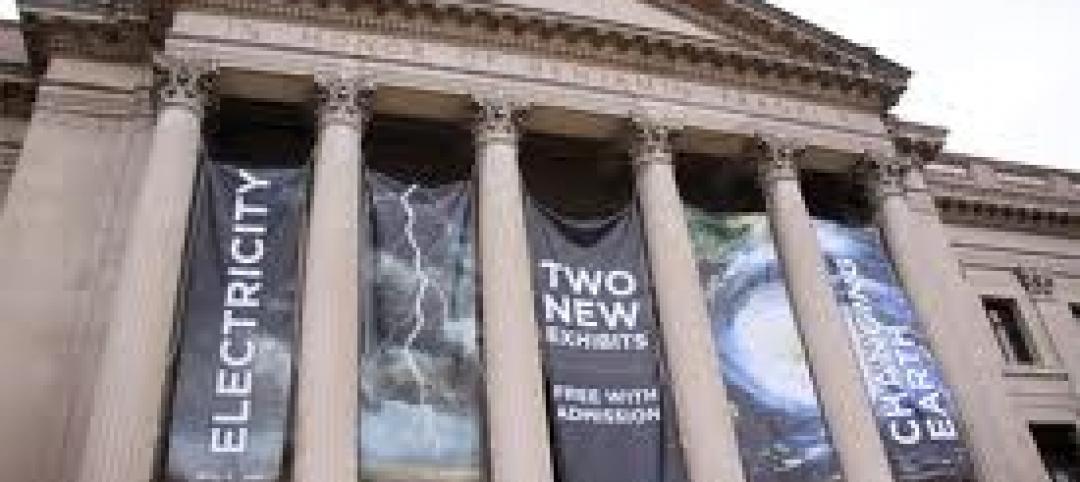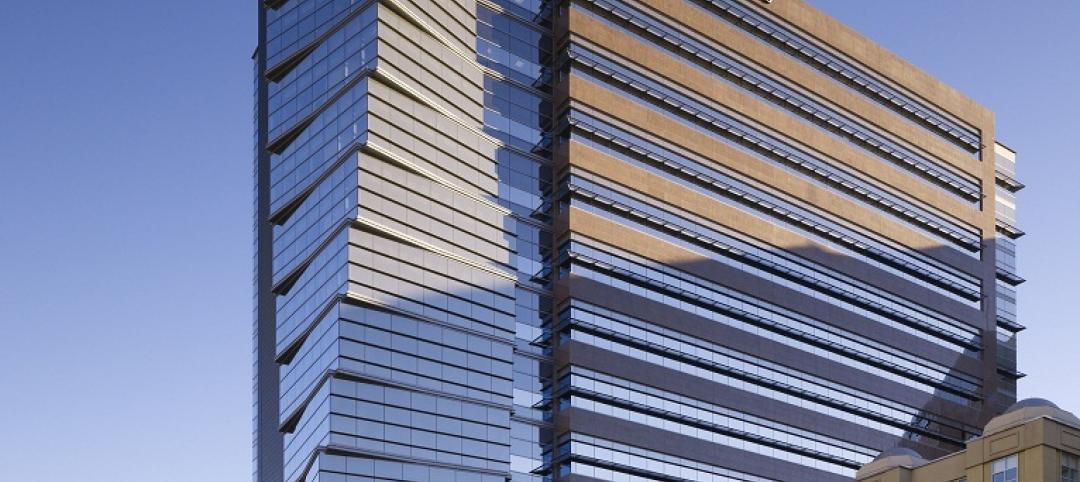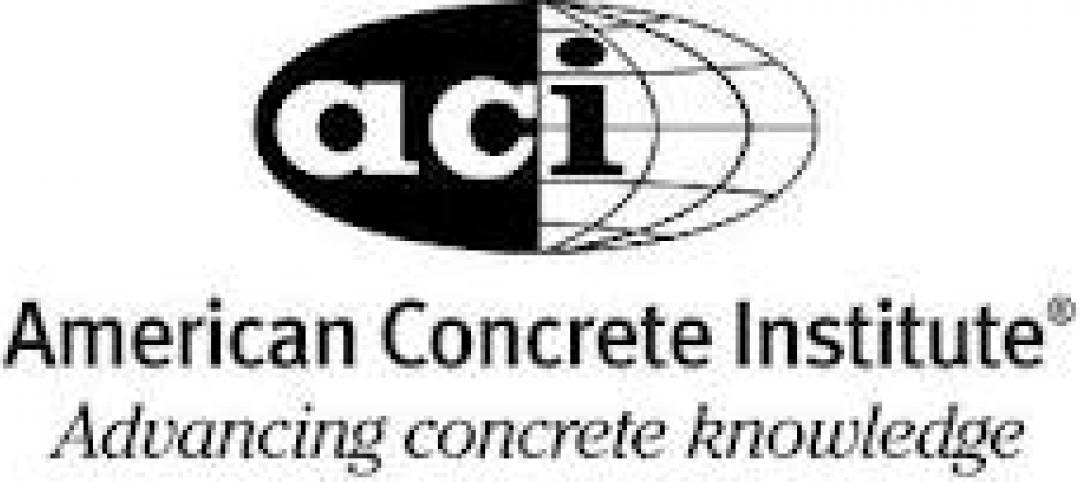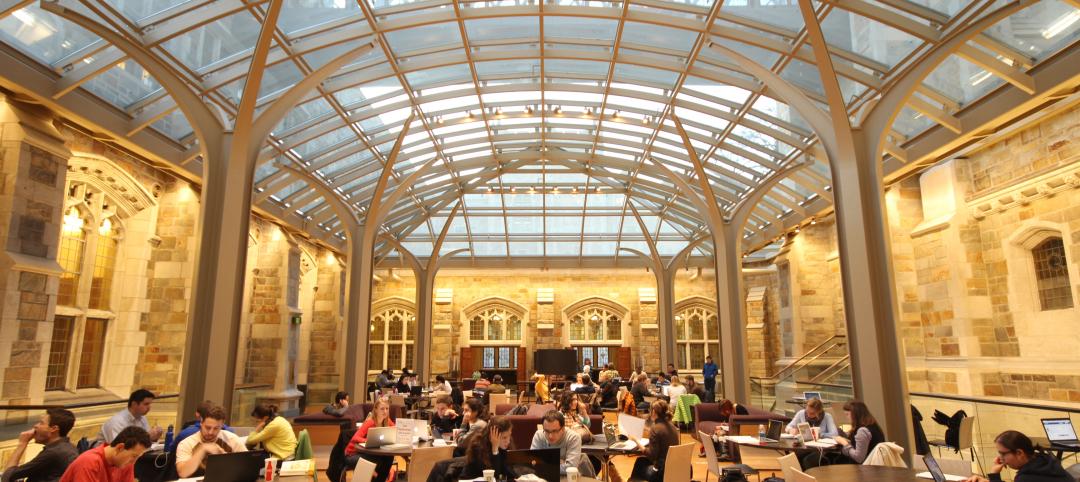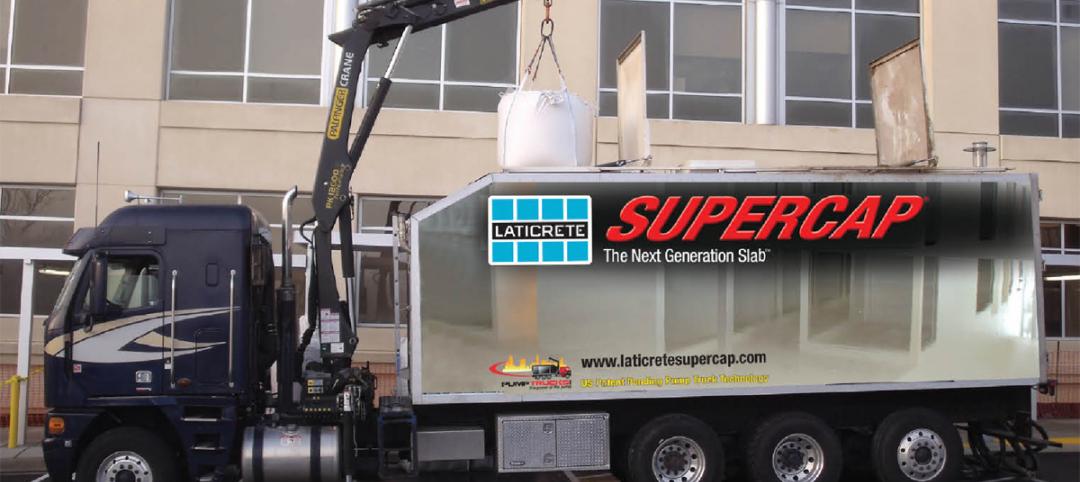If you think you've seen it all when it comes to concrete construction, then you haven't sat down with Blaine Brownell.
The architect-turned-blogger-turned-author has become the industry's foremost expert in everything that is unconventional and provocative in the building products field. For the past eight years, this LEED Accredited Professional, BD+C “40 Under 40” winner, and visiting professor at the University of Michigan's Taubman College of Architecture and Urban Planning has made it a priority to track down the newest building products from around the world and report on them in a weekly online newsletter and in two books: Transmaterial (2006) and the newly released Transmaterial 2 (2008), both from Princeton Architectural Press.
I had a chance to pull up a chair and chat with Brownell about some of the most innovative concrete technologies he's come across recently. Here are eight products that are sure to rock your next concrete project:
Translucent fabric creates see-through concrete
Translucent concrete is not exactly new, but HeidelbergCement's approach to transmitting light through concrete is an industry first. Instead of using acrylic rods or optical fibers, Luccon features translucent fabric that is cast layer by layer into fine-grained concrete, allowing light, shadows, and even colors to project through the concrete with negligible degradation. Because the fabric fibers are small in diameter and the proportion of fabric to concrete is relatively low, Luccon delivers the same strength and durability as conventional concrete.
Contents: Concrete, translucent fabric
Applications: Exterior or interior light-transmitting walls, shading devices, illuminated paving, light fixtures, signage
Manufacturer: HeidelbergCement AG
www.heidelbergcement.com
ALSO SEE: 5 things you should know about decorative concrete
Custom concrete patterned surfaces
A Finnish company has developed a patented method for creating patterned concrete surfaces that involves the precise application of a surface retarder to the exterior of a concrete formliner. The surface pattern is the result of the contrast between the smooth face and the exposed fine aggregate in the concrete. This approach allows precast concrete manufacturers to produce highly detailed concrete elements, panels, and slabs with a variety of select patterns, as well as virtually any custom design.
Contents: Concrete, surface-retarder membrane
Applications: Concrete façades, architectural panels, partitions, garden walls, slabs
Manufacturer: Graphic Concrete Ltd.
www.graphicconcrete.com
Lightweight concrete
Architectural cladding panels made with CarbonCast carbon-fiber grid reinforcing can weigh up to 66% less than convention precast panels. That's because carbon-fiber reinforcing resists corrosion and therefore requires less concrete cover. These thinner, lighter concrete panels can also be integrated with insulation, increasing the R-value of wall systems. When used in the flanges of pre-topped double tees, CarbonCast can reduce weight by 15% and eliminate the need for sealers and sacrificial barrier coatings.
Contents: Precast concrete, carbon fiber
Applications: Load-bearing and non-load-bearing exterior walls, slabs
Manufacturer: Altus Precast
www.altusprecast.com
Turn up the heat and this concrete will tell you the time
A trio of UK-based product designers has developed a method for incorporating dynamic patterns, numbers, and text into concrete surfaces. Chris Glaister, Afshin Mehin, and Tomas Rosén have figured out that by incorporating thermochromatic pigment and wire heating technology into a standard concrete mix, the color of concrete can be changed. With the use of microprocessor control devices, the color-changing pattern can be precisely manipulated to form complex patterns and even information displays, such as dot-matrix clocks. While Chronos Chromos Concrete is not yet commercially available, the material is being used in several projects, including a 40x78-inch information display in the entrance hall of a new building in London.
Contents: Cement, limestone aggregate, thermochromatic pigment, glass fiber
Applications: Large-scale architectural installations, sealed structural information displays such as clocks and dot-matrix displays
Manufacturer: Chromastone UK
www.chromastone.com
Concrete bends, but won't break
Scientists at the University of Michigan have developed a new type of fiber-reinforced “bendable” concrete that looks like regular concrete but is 500 times more resistant to cracking and 40% lighter in weight. The secret is in the composition, which incorporates silica sand just 100 microns in diameter and tiny polyvinyl alcohol fibers covered with a slick coating. When overloaded, the lubricated fibers begin to slip instead of fracturing. The result is a concrete that bends but will not break. Ideal for structures in high seismic regions, Engineered Cement Composites has been applied in several bridge projects, as well as in two high-rise buildings in Tokyo—Roppongi Pacific Tower and Nabeaure Yokohama Tower.
Contents: Cement, silica sand, polyvinyl alcohol fibers
Applications: Structural members for bridges and buildings, especially those located in high seismic regions
Manufacturer: University of Michigan, College of Engineering, Victor C. Li, PhD
http://www.umich.edu/~acemrl/
Add texture to exposed concrete surfaces in a snap
While fabrication of textured exposed concrete surfaces using elastic formliners has been practiced worldwide for more than 35 years, Reckli Formliners offers a significant improvement to the traditional approach. Made from elastic polyurethane, the formliners allow the release of the formliner from precast or cast-in-place concrete without damage to either the concrete surface or the formliner itself. Each formliner is good for between 50 and 100 reuses, making large-scale decorative concrete installations a snap.
Contents: Polyurethane elastomers
Applications: Precast and cast-in-place concrete
Manufacturer: Reckli-Chemiewerkstoff GmbH
www.reckli.de
The world's heaviest wallpaper
At first glance, walls constructed with Walled Paper precast concrete may appear to be covered with decorative paper, but the complex, ornate patterns are actually cast into the surface of the concrete panel. UK-based Concrete Blond can cast more than 50 standard patterns and virtually any custom design into architectural precast panels for interior and exterior cladding, flooring, and surface applications. The patterns can be cast with a textural depth of 1/64 to 3/16 inch on to three types of concrete: Brutalist gray, Victoriana black, and Portland white.
Contents: Concrete
Applications: Wall cladding, flooring, surfaces
Manufacturer: Concrete Blond
www.concrete-blond.com
Don't forget to water your concrete
Developed by Dutch designers Frederik Molenschot and Susanne Happle, Solid Poetry is a concrete tile that reveals a pattern when wet. The detailed patterns are created by carefully applying surface treatment to the finished concrete surface that darkens when exposed to water or humid air. Solid Poetry is ideal for floors, walls, and surfaces in environments that encounter frequent humidity changes, such as poolsides, gardens, bathrooms, and saunas.
Contents: Concrete, surface treatment
Applications: Floors, walls, and surfaces in humid/wet environments
Manufacturer: Studio Frederik Molenschot and Susanne Happle
www.frederikmolenschot.nl
For more products, visit http://transstudio.com.
Related Stories
| Mar 6, 2012
Country’s first Green House home for veterans completed
Residences at VA Danville to provide community-centered housing for military veterans.
| Mar 5, 2012
Perkins Eastman pegs O’Donnell to lead K-12 practice
O’Donnell will continue the leadership and tradition of creative design established by firm Chairman and CEO Bradford Perkins FAIA, MRAIC, AICP in leading this market sector across the firm’s 13 offices domestically and internationally.
| Mar 5, 2012
Franklin Institute in Philadelphia selects Skanska to construct new pavilion
The building has been designed by SaylorGregg Architects and will apply for LEED Silver certification.
| Feb 27, 2012
Research Institute at Texas Children’s Hospital building receives LEED Gold
Innovative and sustainable design reflects best environmental building practices.
| Feb 22, 2012
ACI BIM manual for cast-in-place concrete in development
The improved communication, coordination, and collaboration afforded by BIM implementation have already been shown to save time and money in projects.
| Feb 22, 2012
Siemens earns LEED certification for Maryland office
The Beltsville facility, which also earned the ENERGY STAR Label for energy performance, implemented a range of energy efficiency, water conservation and sustainable operations measures as part of the certification process.
| Feb 17, 2012
Tremco Inc. headquarters achieves LEED Gold certification
Changes were so extensive that the certification is for new construction and not for renovation; officially, the building is LEED-NC.
| Feb 2, 2012
Call for Entries: 2012 Building Team Awards. Deadline March 2, 2012
Winning projects will be featured in the May issue of BD+C.
| Feb 2, 2012
Fire rated glazing helps historic university preserve its past
When the University embarked on its first major addition since the opening of Hutchins Hall in 1933, preserving the Collegiate Gothic-style architecture was of utmost importance.
| Jan 26, 2012
World of Concrete 2012: A tinge of optimism
Cement consumption is expected to increase significantly in 2013, the first time an increase has been predicted in the past five years.


